Today Current Affairs: 23rd May 2022 for UPSC IAS exams, State PSC exams, SSC CGL, State SSC, RRB, Railways, Banking Exam & IBPS, etc
Table of Contents
Guidelines For Safety Assessment Of Genome Edited Plants, 2022:
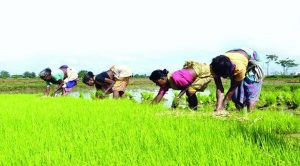
The Department of Biotechnology (DBT) has issued guidelines easing norms for research into Genetically Modified (GM) crops and circumventing challenges of using foreign genes to change crops profile.
- Earlier, the Government has allowed genome-edited plants without the cumbersome GMO (Genetically Modified Organisms) regulation at the Genetic Engineering Appraisal Committee (GEAC).
Highlights of the Guidelines:
- It exempts researchers who use gene-editing technology to modify the genome of the plant from seeking approvals from the Genetic Engineering Appraisal Committee (GEAC).
- The GEAC evaluates research into GM plants and recommends, or disapproves, their release into farmer fields.
- The final call, however, is taken by the Environment Minister as well as States where such plants could be cultivated. The Environment Ministry too has sanctioned this exemption.
- The guidelines provide a road map for the sustainable use of genome editing technologies and applicable to public and private sector research institutions engaged in research and development and handling of genome edited plants.
- Most often, GM plants that have drawn such scrutiny are those that use transgenic technology or introduce a gene from another species into a plant, such as BT-cotton, which uses a soil bacterium gene to protect against pest attack.
- The worry around this method is that these genes may spread to neighbouring plants, where such effects are not intended and so their applications have been controversial.
Genome Editing:
- Genome editing enables modification of plants’ owned genes, without insertion of external genes, as with GM crops.
Genome-edited varieties possess no foreign DNA and are indistinguishable from crops developed through conventional plant-breeding methods, or using naturally occurring mutations.
BRICS High Level Meeting On Climate Change:
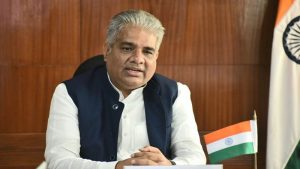
The Union Minister of Environment, Forest and Climate Change participated in the BRICS high-level meeting on Climate Change where he highlighted the relevance of the forum to jointly address climate change, to explore approaches to accelerate low-carbon and resilient transition, and to achieve sustainable recovery and development.
- The Meeting was chaired by People’s Republic of China and was attended by Environment Ministers of BRICS nations including Brazil, Russia, India and South Africa.
Highlights of the Meeting:
- India underscored its commitment to strong climate action including the promotion of sustainable lifestyles based on mindful consumption and reduction of waste.
- India is today leading by example by taking several robust steps in the field of renewable energy, sustainable habitats, creation of carbon sinks through additional forest and tree cover, transition to sustainable transport, E-mobility, mobilizing the private sector to make climate commitments, etc.
- India has progressively continued decoupling economic growth from greenhouse gas emissions.
- Ambitious implementation of climate actions by developing countries is contingent on the ambitious and adequate delivery of climate finance, technology transfer, and other implementation support, as mandated by the United Nations
- Framework Convention on Climate Change (UNFCCC) and the Paris Agreement.
- BRICS nations expressed optimism towards the delivery of climate finance as per the Glasgow decision and the Climate Finance Delivery Plan released by the COP 26 Presidency.
- BRICS Environment Ministers expressed commitment to strengthen collaboration on climate change and broaden and deepen the contents of cooperation.
- Further, the countries agreed to carry out policy exchanges and cooperation in areas of environment and climate change.
Mozambique Identified First Case Of Wild Poliovirus Type 1:
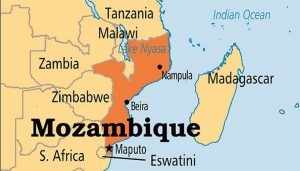
Mozambique has identified its first case of wild poliovirus Type 1 this week after a child contracted the disease.
- It is the country’s first such case since 1992 and the second imported case of wild poliovirus in Southern Africa this year.
- An outbreak was reported in Malawi earlier this year.
- As of today, wild poliovirus is endemic only in Afghanistan and Pakistan.
- The World Health Organization (WHO) defines polio or poliomyelitis as “a highly infectious viral disease, which mainly affects young children.”
- The virus is transmitted by person-to-person, spread mainly through the faecal-oral route or, less frequently, by a common vehicle (e.g. contaminated water or food) and multiplies in the intestine, from where it can invade the nervous system and can cause paralysis.
- There are three variants of the poliovirus, numbered 1 to 3.
- For a country to be declared polio-free, the wild transmission of all three kinds has to be stopped. For eradication, cases of both wild and vaccine-derived polio infection have to be reduced to zero.
- India was declared polio-free in January 2014, after three years of zero cases, an achievement that is widely believed to have been spurred by the successful Pulse Polio campaign.
SpaceX Launched a Rocket Carrying 53 Satellites:
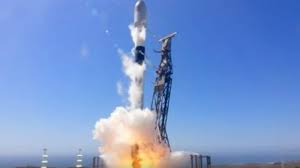
SpaceX recently launched a rocket carrying 53 satellites for the Starlink internet constellation from California Onboard Falcon 9 rocket.
- SpaceX has already launched more than 2,500 Starlink satellites to date but plans to loft many more.
- The Starlink network is one of several ongoing efforts to start beaming data signals from space.
- Under the project, the company intends to evolve into a constellation of nearly 12,000 satellites.
- The aim is to provide low-cost and reliable space-based Internet services to the world.
- LEO satellites are positioned around 500km-2000km from earth, compared to stationary orbit satellites which are approximately 36,000km away.
- As LEO satellites orbit closer to the earth, they are able to provide stronger signals and faster speeds than traditional fixed-satellite systems.
- Because signals travel faster through space than through fibre-optic cables, they also have the potential to rival if not exceed existing ground-based networks.
SpaceX:
- SpaceX is an American space manufacturer, a provider of space transportation services, and a communications corporation headquartered in Hawthorne, California. SpaceX was founded in 2002 by Elon Musk with the goal of reducing space transportation costs to enable the colonization of Mars.
- SpaceX manufactures the Falcon 9 and Falcon Heavy launch vehicles, several rocket engines, Cargo Dragon, crew spacecraft, and Starlink communications satellites.
- SpaceX is developing a satellite internet constellation named Starlink to provide commercial internet service.
- In January 2020, the Starlink constellation became the largest satellite constellation ever launched, and as of May 2022
World Metrology Day 2022 : Theme

Celebrated annually on 20 May globally.
- The day is observed on the anniversary of signing the famous Metre Convention in the year 1875 in Paris,
- Theme for 2022: Metrology in the Digital Era.
- The Day is organised jointly by The International Organization of Legal Metrology (OIML) and Bureau International des Poids et Mesures (BIPM).
Metre Convention:
- It was signed in Paris on 20 May 1875 by representatives of 17 nations.
- The treaty created the International Bureau of Weights and Measures (BIPM), an intergovernmental organization under the authority of the General Conference on Weights and Measures (CGPM) and the supervision of the International Committee for Weights and Measures (CIPM).
- The Convention was signed in Paris on 20 May 1875 by representatives of seventeen nations.
- It aims to set the framework for collaboration in science and measurements globally.
- Metrology is called the scientific study of measurement.
The State Of Inequality In India Report:

The ‘State of Inequality in India’ Report was released by the Economic Advisory Council to the Prime Minister (EAC-PM).
Highlights of the Report:
- The share of the top 1% accounts for 6-7% of the total incomes earned while the top 10% accounts for one-third of all incomes earned.
- In 2019-20, among different employment categories, the highest percentage was self-employed workers followed by regular salaried workers and casual workers.
- The country’s unemployment rate is 4.8% (2019-20), and the worker population ratio is 46.8%.
- In the area of health infrastructure, there has been a considerable improvement in increasing the infrastructural capacity with a targeted focus on rural areas.
India Recorded Highest Ever Annual FDI Inflow : FY 2021-22

India has recorded highest ever annual FDI inflow of USD 83.57 billion in the Financial Year 2021-22.
- In terms of top investor countries of FDI Equity inflow, ‘Singapore’ is at the apex with 27%, followed by U.S.A (18%) and Mauritius (16%) for the FY 2021-22.
- ‘Computer Software & Hardware’ has emerged as the top recipient sector of FDI Equity inflow during FY 2021-22 with around 25% share followed by Services Sector (12%) and Automobile Industry (12%) respectively.
- Under the sector `Computer Software & Hardware’, the major recipient states of FDI Equity inflow are Karnataka (53%), Delhi (17%) and Maharashtra (17%) during FY 2021-22.
- Karnataka is the top recipient state with 38% share of the total FDI Equity inflow reported during the FY 2021-22 followed by Maharashtra (26%) and Delhi (14%).
- Further, India is rapidly emerging as a preferred country for foreign investments in the manufacturing sector.
- FDI Equity inflow in Manufacturing Sectors have increased by 76% in FY 2021-22 (USD 21.34 billion) compared to previous FY 2020-21 (USD 12.09 billion).
World Bee Day:
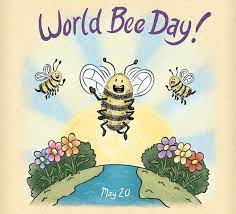
This year, World Bee Day is being celebrated under the theme – ‘Bee Engaged: Celebrating the diversity of bees and beekeeping systems’.
- World Bee Day is celebrated on May 20.
- On this day Anton Janša, the pioneer of beekeeping, was born in 1734.
- The purpose of the international day is to acknowledge the role of bees and other pollinators for the ecosystem.
- The UN Member States approved Slovenia’s proposal to proclaim 20 May as World Bee Day in December 2017.
Beekeeping in India:
- The centrally funded scheme, ‘National Beekeeping and Honey Mission’ aims to establish 5 big regional and 100 small honey and other Bee Products testing laboratories, out of which 3 world class state-of-the-art laboratories have been setup.
- The Government of India is also providing assistance for setting up of Processing Units.
- More than 1.25 lakh metric tonnes of honey is being produced in the country, out of which more than 60 thousand metric tonnes of natural honey is exported.
NASM-SR Missile:
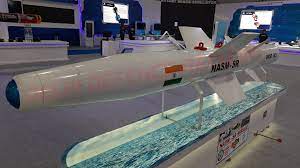
The Navy recently tested an indigenous Naval Anti-Ship Missile (Short Range) or NASM-SR from a Sea King helicopter at the Integrated Test Range in Balasore, Odisha.
- The NASM-SR has been developed by the Defence Research and Development Organisation (DRDO).
- The NASM-SR has a range of 55 km and weighs 385 kg.
- This missile will replace the Sea Eagle missiles which are currently in use with the Navy. With the Sea King helicopters too being phased out, it is expected that the NASM-SR will be used with the new MH-60R multi-role helicopters, which are being inducted into the Navy.
- The NASM-SR carries a warhead of 100 kg and has sub-sonic capabilities, which means that it flies below the speed of sound at 0.8 Mach.
- The sub-sonic flight speed makes it difficult for the naval vessels on target to detect it.
- It has a launch altitude of maximum of 3 km and can skim 5 metres above sea level when on final approach to the target.
- The NASM-SR can also be fired from the shore to target vessels in the sea.
Fostering Effective Energy Transition 2022:

The World Economic Forum (WEF) has released a report named Fostering Effective Energy Transition 2022, which calls for urgent action by both private and public sectors to ensure a resilient energy transition to address the challenges to environmental sustainability, energy security and energy justice and affordability.
Findings of the Report:
- The energy transition is not keeping pace with the growing climate urgency, and recent compounded disruptions from a post-pandemic surge in energy demand, fuel supply bottlenecks, inflationary pressures and reconfigured energy supply chains as a result of the war in Ukraine have made the transition even more difficult.
- High energy prices, risks of energy supply shortages, and soaring demand for fossil fuels are simultaneously challenging energy affordability, energy security and access, and sustainability.
- The lack of access to an affordable energy supply has emerged as a key threat to a just transition.
- Industrial activity generates more than 30% of anthropogenic emissions, yet many industries face considerable challenges to decarbonize.
- Skewed Fuel Imports: Of the 34 countries with advanced economies, 11 rely on only three trade partners for over 70 % of their fuel imports.




